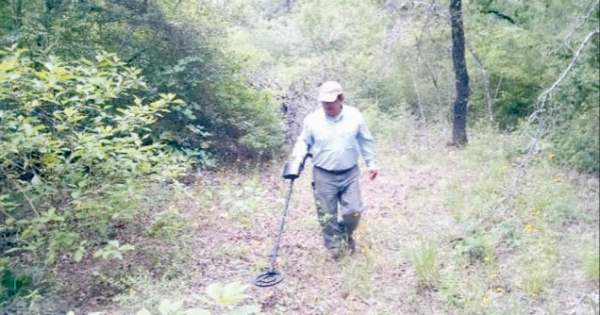




Milam County Historical Commission
Milam County, Texas
Milam County, Texas

Searching For Fabled ‘Rancheria Grande’
Rockdale Reporter - 2016-06-30
$30,000 needed in match funds
GAUSE — Researchers are trying to find remains, or evidence, of a fabled 18th-Century
village containing multiple Native American tribes in eastern Milam County.
The El Camino Real de los Tejas Rancheria Grande project was announced Monday in a Gause
press conference.
It’s a collaborative effort between the ECR National Historic Trail Association, area
landowners, the Milam County Historical Society and GTI Environmental. Archaeologist
Sergio Iruegas was on hand in Gause Monday to announce the project.
An application has been made for a $30,000 Texas Preservation Trust Fund grant and an
additional $30,000 in matching funds will be needed, he said.
Iruegas said recent archeologist’s field work has identified segments of the El Camino
Real running through the area and some artifacts indicate it has been occupied, nearly
continuously, for 10,000 years.
FAMOUS — The Milam Rancheria Grande—Spanish explorers called any village-type gathering
of Native Americans a “rancheria grande”—is one of the most famous.
“Recent review of historical documents has confirmed the existence of a Rancheria Grande,
containing remnants of 22 nations, which was dominated by the Ervipiame (tribe) in this
area,” he said.
Spanish explorers first documented Rancheria Grande in the early 1700s.
In 1716, Captain Domingo Ramón, commander of Mission San Juan Bautista, on the western
Rio Grande, and Fray Isidro Félix de Espinosa traveled through La Provincia de los Tejas
along this route.
In the 1720s, Fray Juan Antonio de la Peña, the missionary with the Governor Marqués de
San Miguel de Aguayo expedition traveled along the same route.
As many as 500 settlers traveled along the swale remnants that represent El Camino Real
de los Tejas.
General Sam Houston used the trail during the Republic of Texas, and General Zachary
Taylor marched his men from New Orleans through the trail segment down to Brownsville
during the Mexican American War.
Since then and up through the 1920s, countless other cattle trail drives and merchants
have used the trail segment, Iruegas said.
FUNDS — GTI is also providing in-kind services beyond funding of the grant. “We will be
donating well over $60,000 in services in kind,” Iruegas said.
The project includes archival research, archaeological investigations, and reporting of
archaeological sites.
All contributions should be made payable to El Camino Real de los Tejas National Historic
Trail Association and are tax-deductible.
Contributions should note that they are for the Rancheria Grande Project and can be
mailed to:
El Camino Real de los Tejas
National Historic Trail Association
P.O. Box 41286,
Austin, TX 78704
.
All credit for this article goes to
The Rockdale Reporter

Archeologist Sergio Iruegas searches for evidence of Rancheria Grande along suspected section of El Camino Real.
Photo courtesy of GTI Environmental
.
Photo courtesy of GTI Environmental
.